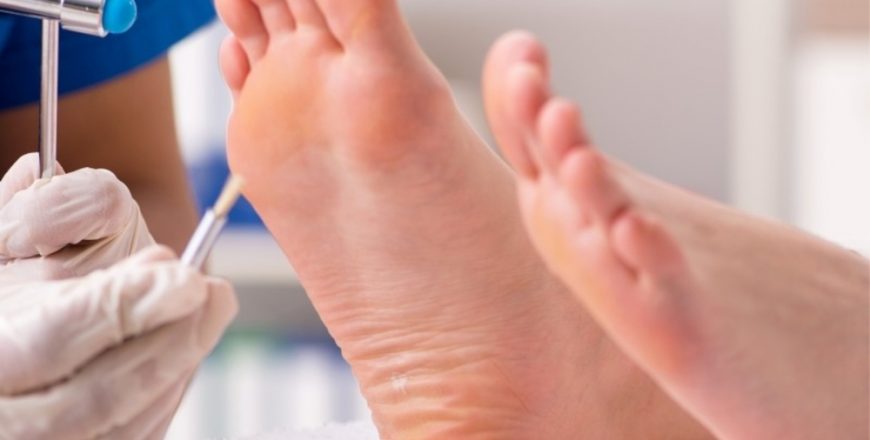
On a podiatrist apprenticeship course, you’ll help protect people’s feet by providing preventative advice, care, examination, diagnosis, and treatment for various lower-limb disorders.
As a podiatrist, you’ll work to reduce the impact of damage and dysfunction while also participating in rehabilitation. You will be crucial in reducing the risk of amputation, infection, pain, deformity, and hospitalisation.
You’ll learn wound care, daily skin and nail care, nail surgery, scalpel work, and long-term condition treatment.
You will perform a musculoskeletal evaluation before adopting a treatment plan to enhance or increase mobility or reduce pain. You’ll also advise on functional insoles to aid with condition management. After finishing your apprenticeship, you will be awarded a podiatry degree.
What you’ll learn
On a podiatrist apprenticeship course, you’ll learn to:
- Work with patients and others to achieve your goals.
- Communicate clearly and correctly, carefully listening to identify all the factors influencing the patient’s foot health.
- Provide person-centred podiatry treatment programmes, encourage informed decision-making, and allow for optimal self-care
- Choose and use assessment and treatment techniques that are safe, effective, and ethical, such as interpreting medical history, recognising potential treatment consequences, performing mechanical debridement to remove painful, dead, damaged, or infected tissue of intact and ulcerated skin, taping and similar adjunctive therapies, performing surgical procedures for skin and nail conditions, managing nail disorders, or prescribing foot orthoses.
- Develop and test a preferred diagnosis using a rigorous approach.
- Cope with a range of situations to encourage mobility and freedom.
- Use local anaesthetic to conduct treatments, including minor surgery.
- Make and receive referrals, as well as be responsible for assessing clinical findings in the lower limb and choosing whether to send or discharge patients
- Deliver verbal and written health education on public health, foot health, mobility, and the lower limb in a group or one-on-one setting, including preventative, palliative, or curative information.
- Keep the environment clean and risk-free.
- Order, store, sterilise and dispose of podiatric supplies and equipment.
- Work as a part of a multidisciplinary team, demonstrating leadership and management skills.
- Utilise clinical governance systems to improve podiatry practice and overall healthcare standards by reviewing and monitoring your practice and performance.
- Provide evidence of evidence-based practice.
Entry requirements
You’ll usually need:
- 2 to 3 A levels, or equivalent, preferably including biology, for a degree apprenticeship.
- Apprentices without level 2 English and maths will need to achieve this before taking the end-point assessment.
Assessment methods
The End Point Assessment comprises two distinct assessment methods:
- Observation, including the question-and-answer session
- Presentation
Restrictions and requirements
You’ll need to:
Duration, level, subjects and potential salary upon completion
- Duration: 48 months
-
Level: 6 – Degree Apprenticeship
- Relevant school subjects: Science
- Potential salary upon completion: £25,000 per annum
Apprenticeship standard
More information about the Level 6 Podiatrist Apprenticeship standard can be found here.
Apprenticeship end point assessment
For more information about the End Point Assessment Process, please read the Institute of Apprenticeships’ information page
